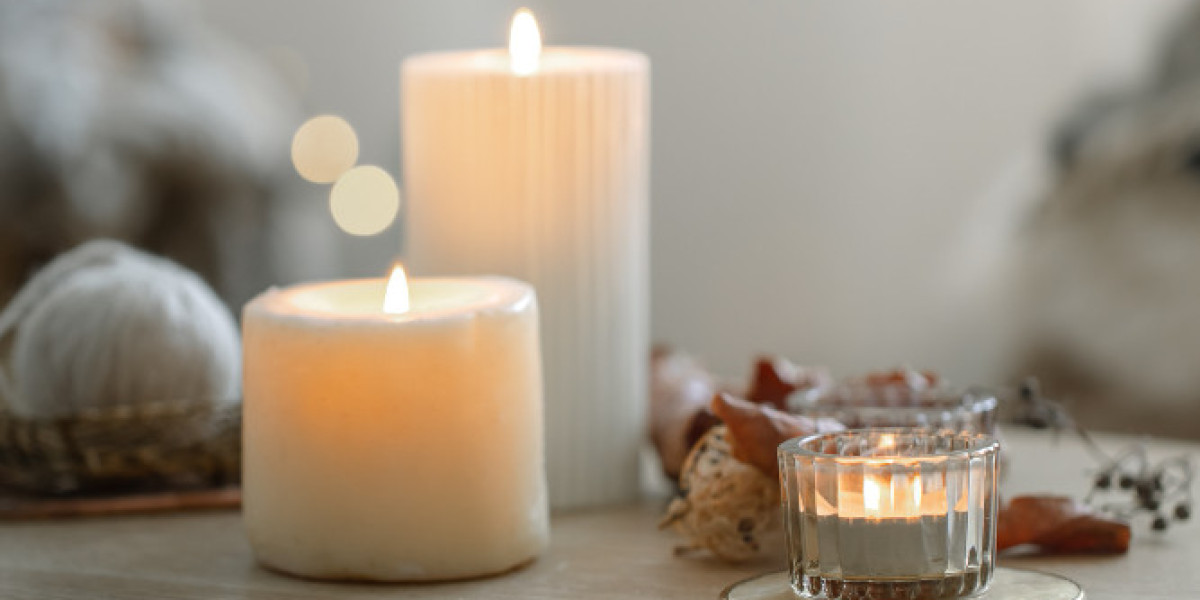Candles have been a part of indoor environments for decades as sources of ambiance, fragrance, and warmth. Relaxation, decor, or festive atmosphere are some of the reasons they are used, and their presence gives one comfort. Beyond the dancing flame, however, is where the question arises—what's their overall effect on health?
Candles are crafted using various materials, each with distinct properties. Some burn cleanly, while others release microscopic particles and chemicals into the air. Understanding their differences can help create a healthier environment without giving up the pleasure they bring.
Wax Choices Matter More Than Expected
Paraffin Wax: The Common but Controversial Option
Paraffin wax candles are common and inexpensive. They are made from petroleum waste and will off-gas toluene and benzene when they are burned, both of which are listed as potentially toxic. Use over extended periods in unventilated spaces is likely to impact air quality, particularly for sensitivities.
Regulatory agencies allow them to be sold, but a few experts suggest using them in limited exposure by means of minimal usage or at least through alternatives with lower emissions.
Soy Wax: The Green Alternative
Soy wax is derived from hydrogenated soybean oil. With its cleaner burning category, this product has gained growing popularity among those seeking greener solutions. It lasts longer while it burns and leaves less soot than paraffin, ensuring cleaner indoor environments.
Soy candles can also be mixed with natural essential oils rather than synthetics, reducing the risk of respiratory inflammation even more.
Beeswax: Purifying the Air Naturally
Beeswax candles also burn cleanly and can be used to purify the air. When burned, they release negative ions that attract positively charged particles such as dust or pollen and make them fall from the air. This makes beeswax a perfect choice for people with allergies.
Beeswax candles also contain a mild honey fragrance without the addition of fragrance so that they will not likely annoy sensitive noses.
Fragrance Oils vs. Essential Oils in Candles
Synthetic Fragrance Oils: Nice or Nasty?
Smells are one of the largest reasons candles are even lit up in the first place. But some store candles have synthetic scent oils, and they release volatile organic compounds (VOCs) into the air. These sometimes can cause headaches, dizziness, or allergic reactions.
For those with asthma or chemical sensitivities, forgoing scents from artificial products can lower the risk of symptom occurrence when burning candles indoors.
Essential Oils: A Less Irritating Scent Alternative
Essential oil-scented candles provide a less irritating option. Derived from plants, essential oils are more tolerated. While not completely risk-free—some individuals will respond to potent odors nonetheless—their impact on the respiratory system is less intense.
It is well worth checking that a candle genuinely is essential oil-scented because some labeling is deceptive.
Wicks, Additives, and Their Impacts
Wick Materials and Metal Cores
Wicks to candles might be wood or cotton or might have a metal core. Lead cores once contained within some wicks had presented grave health threats. Though outlawed in the United States as of 2003, imported candles may include these cores.
Buying candles from quality sources guarantees safer ingredients. Cotton or wood wicks are generally safer and more evenly burning.
Additives and Dyes
Aesthetic candles typically contain chemical stabilizers and man-made dyes. When they are burned, these chemicals will be an indoor air pollutant. Although the effect will be negligible for one-time or occasional use, extended usage might cause irritation to those with respiratory illnesses.
Dye-free and naturally pigmented candles will serve to reduce possible exposure to excess chemicals.
Seasonal Spots: Christmas Candles
Holiday Candles and More Pungent Scents
Christmas candles tend to carry heavy, pungent scents such as cinnamon, pine, and clove. The strong odors can add a cozy atmosphere but are potentially sensitizing to other people. If there are many scented items being burned in an enclosed space—like potpourri, sprays, and candles—the air will become thick very quickly.
Applying heavily fragranced items along with minimal air exchange during the cold winter months may cause a headache or discomfort. Some harmful substances in these candles may make Christmas candles harmful for the heart and lungs.
Decorative Trimmings and Glitter Candles
A few Christmas candles contain glitter, colored wax, or trimmings inside. Although they may be aesthetically pleasing, they can burn badly or create excessive smoke. They emit particles into the air, too, when melted or burned.
Utilizing natural material candles and minimal trimmings can make the atmosphere festive without damaging the air quality.
Candle Use and Indoor Air Quality
Ventilation Makes a Difference
Smoking candles indoors allows the smoke and particles to accumulate. Allowing fresh air to enter during or after burning candles is helpful. This can be achieved by using air purifiers or leaving a window open for a short duration to reduce airborne levels of compounds.
Asthmatic individuals or toddlers who live in the home will gain the most from these precautions.
Duration of Burning and Space
The extent of candle burning and room space also contribute to causing health effects. In smaller areas, one candle can emit so much emissions that it has an impact on the air quality over time. Short burning periods in large rooms reduce this effect.
Not so much what candle is burned, but where and how it was burned.
Effective Candle Safety Habits
Placing Candles Carefully
Keeping candles away from vents, curtains, and other combustibles reduces the risk of accidents. Never burn candles near children or pets to avoid spills or burns.
Flat surfaces and holders that are heavy enough not to fall are best for safe placement.
Snuffing Out Properly
Blowing out a candle can produce smoke and emit soot. It can be extinguished using a snuffer or by slowly burying the wick in melted wax without further contamination.
Prolonging the wick cooling prior to trimming makes the candle reusable once more.
Alternatives to Candles to Produce Scent and Atmosphere
LED Candles and Diffusers
LED candles give the soft light of a flame without emissions. With essential oil diffusers, they can create the ambiance of a candlelit room but with fresh air. Some are also humidifiers, which ensure indoor comfort during dry spells.
This product is particularly useful for allergy or respiratory-conditioned households.
What Research Suggests
Health effects of candles are greatly influenced by how often they are used and what ingredients they contain. Minimal risk is posed by occasional use in good ventilation with non-toxic candles. Frequent use of paraffin candles indoors may be a health problem after several exposures, though.
Research referenced by the American Lung Association focuses on ventilation and safer alternatives as crucial to quality indoor air. Find more at the ALA.
Conclusion: Burn Wisely and Buy Responsibly
Candles will beautify any room, but caution in their components and burning is called for. Knowledge of the impact of wax, fragrances, wicks, and additives permits wise choices that enhance comfort and health.
Options like beeswax or soy, good air flow, and limited burn times provide the best of both worlds—ambience and wellness. Getting enough knowledge through good resources such as medicarewell.com make it easier to make the right decision. With wise use, candles will illuminate homes forever without expense.
FAQs
Q1. What is the safest indoor candle wax to breathe in?
A1. Soy wax and beeswax are safer than paraffin. They release fewer toxins and burn cleaner indoors. Burning them may enhance indoor air quality, particularly for small spaces.
Q2. Are scented candles bad to inhale?
A2. Volatile chemicals are released by perfumed candles, particularly the man-made scented ones. In some people, this can cause headache or irritation. Christmas candles with essential oils might minimize irritation risk.
Q3. Can Christmas candles endanger health during winter?
A3. Strongly fragrant Christmas candles can trap indoor pollution if houses are shut tight for heat. Low ventilation traps scent particles in the air. Faintly fragrant, natural candles tend to be the healthier choice during the holiday season.






